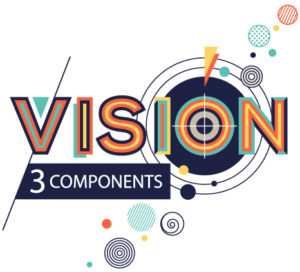How To Recruit Insurance Agents
- December 16, 2022
- 3 min read
- Recruitment
How To Recruit Insurance Agents
- December 16, 2022
- 3 min read
- Recruitment
How To Recruit Insurance Agents
- December 16, 2022
- 3 min read
- Recruitment
Part I: Laying the Plan and Foundational Pieces
Agent recruitment is essential to reaching your goals, whether you are an agent yourself building a strong networking group around you or you are part of a company or brokerage operation bringing in agents to your downline operations.
Sooner or later, naturally, the question of efficiency will arise: What is your cost of agent acquisition versus your returns?
 The surest way for that to spin out of control, or have hit-and-miss results, is by having no strategic plan for your recruitment or by failing to lay certain pieces in place prior to launching a recruitment campaign.
The surest way for that to spin out of control, or have hit-and-miss results, is by having no strategic plan for your recruitment or by failing to lay certain pieces in place prior to launching a recruitment campaign.
For those who aren’t just looking for a one-time trick but want consistently good recruitment results, we offer a guide here with the most essential elements to consider, line up, and use to execute a good game plan and get great results.
One comment before we begin: Our covering agent recruitment adequately would require an entire book. Admittedly, this article is ambitious in its scope, but it does address the topic in substantial depth. So, let’s get started.
Your Recruitment Goals
Agent recruitment has many variables. The first key variable is the nature of your group and the second is the kind of agent you want to attract.
If you are a local agency associated with a well-known carrier brand, your approach must be different than, say, a brokerage firm adding independent producers to your downline operation.
In the life and health insurance markets, growth flows through independent distribution channels. While carriers focus on developing product and servicing consumers, the burden of recruitment falls on wholesalers like field marketing organizations (FMOs), independent marketing organizations(IMOs), and brokerage general agencies (BGAs) that recruit and build downlines of independent producers – and having success doing so is part and parcel of their revenue growth.
How does a good recruitment plan begin?
Good Recruitment Starts with the Right Vision
Regardless of the scale of your recruitment initiative, your firm’s vision must align with the agent’s vision, laying the keystone for all recruitment success.
 Leader cannot lead unless they know where they’re going – that applies to both individuals and groups – and since recruitment is all about agents joining and following your group as they pursue success, defining your vision and communicating it to a prospective recruit is indispensable.
Leader cannot lead unless they know where they’re going – that applies to both individuals and groups – and since recruitment is all about agents joining and following your group as they pursue success, defining your vision and communicating it to a prospective recruit is indispensable.
There are three BIG benefits to formulating or clarifying your existing vision:
- A great vision inspires extraordinary performance. It also attracts great performers.
- A properly communicated − and cultivated − vision builds a team.
- A well-defined vision helps a group overcome its dependence on a single person or a few key people and fosters growth together as a whole unit.
It is vital to have a strong and well-stated vision in place, and to revise it as needed before embarking upon recruitment.
The Three Components You Need When Communicating Your Vision
It’s not always easy. To be fair, there has been some confusion in the past regarding what vision is. I love James C. Collins and William C. Lazier’s take on the topic in their book Beyond Entrepreneurship. Basically, vision consists of three components.
- Core Values: These are your group’s guiding principles – often an extension of the personal core values and beliefs of its leaders – their philosophy of business and life.
- Purpose: This is the basic reason for your group’s existence. It is like a guiding star in the sky that is never physically reached but guides your team and gives everyone a definite direction.
- Mission: Your mission stands in contrast with purpose. Some companies vaguely define their mission as an on-going purpose, and this is a miss. A mission is an audacious goal with a clear finish line and is often accompanied by a specific time frame. After you finish one mission, you must set a new one for the team.
“Okay,” you say, “so how is this relevant in recruitment?”
It is ideal that you bring on people (agents) who feel attracted to your core values, feel energized by your purpose, and can get behind your mission as it aligns with their own.
That brings us to our next foundational step.
How to Use the Agent's Own Vision in Recruitment
Imagine the agent you want joining your group.
He or she is on his or her own path or journey. There is something that is driving the agent forward, something they want to attain – or something they don’t have yet.
 Your recruitment message must appeal to that – what he or she desires and doesn’t yet have. To articulate that, you must know something about your potential agent’s journey and his or her barriers.
Your recruitment message must appeal to that – what he or she desires and doesn’t yet have. To articulate that, you must know something about your potential agent’s journey and his or her barriers.
Barriers need not be daunting. A common barrier is simply time. Maybe the agent you seek is doing okay and has a fair amount of confidence in achieving career goals but perhaps the opportunity in your company provides a way to get there faster.
 The obstacles could also be a lot more daunting. Perhaps the agent feels a high need to be in an entirely different income level; say he or she is relatively new in the industry and is not having a good go of it. Your company might just provide the coaching program and system with which the agent can get there.
The obstacles could also be a lot more daunting. Perhaps the agent feels a high need to be in an entirely different income level; say he or she is relatively new in the industry and is not having a good go of it. Your company might just provide the coaching program and system with which the agent can get there.
This is something you must carefully think through and work out. Even if you’re hiring a recruitment team, you must supply this vital information to the team so they do a great job on your behalf.
Perhaps your prospective agent is already successful. Maybe you only recruit already successful agents. Let’s say his or her client acquisition methods have made his or her situation stagnant, and your recruitment value proposition is a new marketing idea with which the agent can really thrive.
So, you get this idea of a “before” state and an “after” state in the mind of the agent you want to recruit.
 A recruit is never looking, particularly, for a new company, a new job, or a new opportunity, as much as the recruit is looking for an outcome in life – moving from a “before” state to an “after” state.
A recruit is never looking, particularly, for a new company, a new job, or a new opportunity, as much as the recruit is looking for an outcome in life – moving from a “before” state to an “after” state.
Successful marketing − and messaging − plays a key role in recruitment as it promotes not so much a company or a job but a desired outcome to the agent. Part II of this article will take an even deeper dive into that idea.
Whatever your recruitment message, what you promote will only appeal to the right people. There’s nothing more costly than pouring money and time into recruiting amidst the wrong pool of prospects.
So, how do you ensure you get it right?
Selecting the Right Pool of Prospects for Recruitment
Selecting the right pool of prospects is extremely important, and yet it is a bit of a balancing act. You must consider − and be very specific about − who you what to target as well as who should be left out.
For example, a brokerage firm dealing with Medicare products may find that agents who “work out” and do well with them historically bring some industry experience already, have a desire for supplemental income, and like having control of their own schedules. Those who have been around for too long, however, aren’t receptive to new methods, or say, agents focusing on financial services are not as interested in Medicare products. So, this is about who is the right fit and who is not.
 For a different example, consider a life insurance company hiring agents to a career opportunity. Historically, success has come from hiring “green people,” completely new to the industry. The job description is key in attracting people with both the aptitude and temperament for a sales career. The company may have had success in job fairs at colleges, particularly when targeting people in finance-related majors.
For a different example, consider a life insurance company hiring agents to a career opportunity. Historically, success has come from hiring “green people,” completely new to the industry. The job description is key in attracting people with both the aptitude and temperament for a sales career. The company may have had success in job fairs at colleges, particularly when targeting people in finance-related majors.
Another scenario could be an IMO strong in the annuity market. Think about such an operation without the resources − or desire − to train brand-new agents. Because of their relationships, they offer great commissions and especially new marketing ideas to producers active in the retirement market. Their ideas are best received by agents whose prospecting methods are not producing the desired results. On the flip side, they’ve discovered that producers with restrictive Broker-Dealer regulations do not work out.
Our examples are over-simplified, and we couldn’t possibly describe every scenario. Yours may be different. But the point should be clear: you need to target the people who will be a good fit to avoid expensive mistakes.
A common way, however, to get it wrong is to select the target based on a wish-list of hypotheticals.
That’s why the best way to select your pool is by first building an Agent Persona – a Recruitment Persona. This is the next foundational piece to assure success and efficiency in recruiting.
How to Build a Recruitment Persona and Avoid Expensive Ineffective Recruitment
This topic alone deserves a lot more than a section in an article. But as we pursue our purpose to provide a recruitment blueprint, we’ll dive right into it, while recommending further study of the topic, specifically Adele Revella’s book Buyer Personas.
Marketing pros know to develop a profile or avatar when targeting specific groups. This is a good start, but it falls short of a complete persona. To avoid confusions, a profile or avatar is a detailed description of the target individual with relevant details about their life, informing those who seek to influence them how to craft the right message that goes out to them to move them into action.
These “details” about their lives could be things like age, licensing, background, education level, and insights on their attitudes and desires.
 A persona, however, would be more thorough. It also would cover a more-complete set of insights that would inform those recruiting just what are the individual’s key motivations, hesitations, and preferences. You wouldn’t go through the trouble to put this together simply to have better documentation, but because you want to get results while spending the least resources.
A persona, however, would be more thorough. It also would cover a more-complete set of insights that would inform those recruiting just what are the individual’s key motivations, hesitations, and preferences. You wouldn’t go through the trouble to put this together simply to have better documentation, but because you want to get results while spending the least resources.
Marketing the wrong way is expensive, and that applies to recruitment.
A complete persona includes these five key insights:
- A Priority Initiative: This is the key motivation(s) in the agent’s personal life or situation that prompts a need for change. The compelling reasons he or she keeps options open.
- Success Factors: This is the agent’s vision for himself or herself. This is the “after” state, defined above. This is what success looks like to him or her.
- Barriers: The most likely hesitations he or she will have when considering joining you. These are the obstacles he or she perceives or believes are there in connection to coming on board with you.
- Due Diligence: Every potential recruit will do his or her own research to size up your group or company and evaluate the opportunity. You want to know what that journey is, whether there are influencers in that process, and where do they look when researching you.
- Key Preferences: A potential recruit, or agent, likely has choices in addition to your group. Short of a very complete competitive analysis in your market, you need to know at least the key preferences for your prospect when making a decision. Is it compensation, your affiliations, the brand(s) you represent, work schedule, technology, the support you offer, or something else? These preferences vary widely depending on who you’re recruiting, and it can be a simple single preference or a list of several.
 The above list begs the question: How do you get such insight?
The above list begs the question: How do you get such insight?
These insights are best procured from the very agents who joined you in the past, and believe it or not, some of the best insights will come from qualified agents who considered joining you but did not. When candidly shared with you after the fact, their input may truly expose your group’s strengths and weaknesses.
If you have only small number of agents (or no agents) who joined you in the past, such insight can still be gathered by talking to the kind of agents you wish to recruit. Get out there and talk to some people.
Do not neglect building your recruitment personas.
If your company has a track of good recruitment results, building a persona is easier. In fact, the complete Buyer Journey could be put together along with it. If you are recruiting for the first time, you will have to act instinctively and inevitably must be willing to test things out. Be prepared for that.
You can also hire experts at building personas or an expert recruiting team.
Armed with the correct profile and adequate insights about your agent, you are ready to go into the promotion phase.
It is Time to Write Down a Recruitment Plan
Success, at least consistent success, doesn’t just happen. It is preceded by a good plan.
 You have now clarified your vision, you have fully explored what will be the kind of agent you are going to go after, and you have worked out the points listed above for yourself. This naturally leads to promoting the opportunity.
You have now clarified your vision, you have fully explored what will be the kind of agent you are going to go after, and you have worked out the points listed above for yourself. This naturally leads to promoting the opportunity.
If you are going to hire traditional career agents, the approach is different than if you are going to add independent agents to your downline. That is why we will split into two paths now. We will cover the hiring of agents to a career opportunity and recruiting independent agents on different documents. Find those links below.
The following point and potential pitfall, however, apply to both cases:
The Hidden Factor That Will Kill Your Recruitment Campaign Behind the Scenes
You will see that good recruitment is rooted in three basic and sequential elements:
- Public Relations
- Marketing
- Selling
Before you grow impatient, thinking, “I just want a couple of agents to join my group,” or “PR sounds like the stuff only large companies can afford,” I will show you how vital is to check and ensure this point is addressed and how inexpensively it can be done.
Public Relations (PR): Let us begin by defining it well. PR is “the management function that establishes and maintains mutually beneficial relationships between an organization and the publics on whom its success or failure depends.” PR isn’t just shaking hands and kissing babies, or wining and dining key people. Effective PR has a clear objective: procuring goodwill from the right people. The reason you vitally need that is, advertising and selling tend to not work or get very expensive without it.
Remember how a certain company spilled a bunch of oil in the Gulf of Mexico back in 2010 and suddenly nobody wanted to buy gasoline from them? That company spent handsomely in full-page ads, but having lost their goodwill, no matter how hard they advertised, their sales faded.
If your PR is inadequate, your recruitment budget will turn into smoke and you’ll see no results.
“Well, yeah,” you say, “but I’m not a big oil company.” Here’s how PR works even for a one-person agency: As soon as you engage a potential recruit (or applicant) he will Google your group, possibly the carrier brand (s) you represent, and try to gauge what others (employees, clients, etc.) are saying about you. In PR, no information can be as bad as bad reviews. If you have no online presence, a single review, or a single endorsement, your recruitment results could suffer significantly, and without even you realizing it!
Your recruitment plan must include the following vital points:
- Conduct a thorough review of your own or company’s online presence and reputation. What data is out there that potential recruits will look up and find.
 Effectively handle bad reviews or negative comments. This may be as simple as responding to all reviews and comments with care.
Effectively handle bad reviews or negative comments. This may be as simple as responding to all reviews and comments with care.- Eliminate the no-online-presence pitfall. Does your agency have a website, social media presence, and have these been endorsed by anyone? Consider what potential agents joining you would expect. Sometimes, not finding you at all online can be as bad as encountering bad reviews.
- PR is more powerful when other people talk about you versus when you do it yourself (that’s called advertising). Publish when possible any and all endorsements, reviews, or testimonials.
- Post videos enabling people to see you, which will make you more “real” and will disseminate your message in a more human, more real way. Use your website and other channels to get yourself or company out there.
If you have access to an effective PR team, that is wonderful. Different companies may offer the option that fits your budget. But you can also inexpensively roll up your sleeves and take care of those points personally, and get your ducks in a row before you pour money into recruitment advertising.
Let us recap the fundamental points we went over before we dive into promoting your opportunity and using marketing successfully.
Summary
Agent recruitment is a big topic with many variables. The first variable of course is the nature of your group and the second variable what kind of agent you wish to attract.

Consistent success does not come from good luck and good timing alone. You need a plan.
If a company fails to handle reputation issues, online presence, or PR points, a recruitment investment could yield little or no returns.
Start putting together the right strategy and working on the foundational pieces:
- Formulate the vision of your group or revise it.
- Ensure that your vision includes your core values, your purpose, and your mission, especially as it relates to the people you want joining your group.
- Get very specific and define clearly what kind of agent you want through an agent persona or a recruitment persona. Ensure the necessary data and insights are there so everyone involved in your recruiting initiative get on the same page.
- Work out thoroughly what is the value your opportunity brings agents.
- Have a budget to promote your opportunity.
- Inform yourself honestly on your company reputation and online presence and make any necessary adjustments.
- Line up who will interview and close prospective new agents.
Join us for Part II to see examples and specifics for executing on an effective recruitment game plan.
Stu Gramajo
CEO and Director of Market Research
Agent Link
Categories
- Martketing (2)
- Recruitment (4)
- Sales Techniques (1)
- Technology (1)
- Uncategorized (1)




